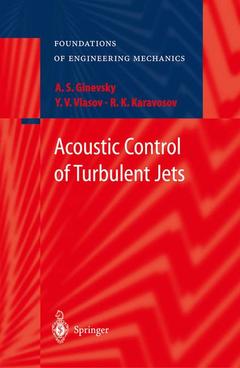Acoustic Control of Turbulent Jets, Softcover reprint of hardcover 1st ed. 2004 Foundations of Engineering Mechanics Series
Auteurs : Ginevsky A.S., Vlasov Y.V., Karavosov R.K.

Results of experimental research on aerodynamic and acoustic control of subsonic turbulent jets by acoustic excitation are presented. It was demonstrated that these control methods, originated by authors, not only can intensify mixing (by acoustic irradiation at low frequency), but also notably ease it (at high-frequency irradiation). This research monograph presents the updated results of the authors supplemented by other investigations conducted in USA, Germany and Great Britain. The methods for the numerical simulation of subsonic turbulent jets under acoustic excitation are described in detail, and examples are reviewed of practical applications, including reduction of turbojet engine noise and acoustic control of self-sustained oscillations in wind tunnels.
Date de parution : 12-2010
Ouvrage de 235 p.
15.5x23.5 cm
Date de parution : 01-2004
Ouvrage de 235 p.
15.6x23.4 cm



